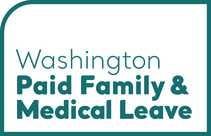Email two of five
 About this message: This is the second email in a five-part series designed to help employers prepare for the legal requirements that kick in on Jan. 1, 2019. To read the previous email in the series, go to www.paidleave.wa.gov/newsroom. For more information now, visit http://www.paidleave.wa.gov/employers.
About the program: In 2017, Washington’s Legislature passed a paid family and medical leave law. Starting in 2020, Washington will be the fifth state in the nation to offer paid family and medical leave benefits to workers. A premium of employee gross wages will fund the program, with the cost shared by both employees and many employers. The Employment Security Department (ESD) administers the program.
|
Employers start collecting premiums for Paid Family and Medical Leave on Jan. 1, 2019.
For 2019, the premium rate is 0.4% of each employee’s gross wages, minus tips. Businesses of all sizes, including faith organizations, nonprofits and charities, calculate premiums using the same formula. Detailed information on calculating premiums, including a calculator you can use to estimate your premiums, is available on our website at www.paidleave.wa.gov/employers.
In Paid Family and Medical Leave, wages are generally referred to as gross wages without tips. Gross wages include salary or hourly wages, sick leave, vacation leave, holiday pay, bereavement leave and paid time off, bonuses, stocks as part of a compensation package, cash value of meals and lodging when given as compensation, stipends and per diem.
Wages are defined in statute as the remuneration paid by an employer to an employee (up to the Social Security cap for premium assessment).
Businesses of all sizes calculate premiums using the same formula. Unless you are operating an approved voluntary plan, this is how you calculate premiums:
Step one
Calculate the total premium for each of your employees. The premium for 2019 is 0.4% of gross wages. So:
Gross Wages x .004 = Total Premium
Step two
Calculate the employee and employer shares of the total premium. Under the law, the total premium is a shared cost split between employers (36.667%) and employees (63.333%). So:
Maximum Employee Share: Total Premium x .6333
Minimum Employer Share: Total Premium x .3667
All employers, regardless of size, are responsible for remitting the employee share of the premium to ESD on a quarterly basis. You can choose to withhold the entire 63.333% from your employee’s paycheck, or you can cover all or some of the premium on your employee’s behalf.
Important details:
- Premium withholdings are capped at the Social Security cap, which is updated annually. It is $132,900 for 2019.
- If you are using a voluntary plan for family or medical leave, your calculations may be different. Visit www.paidleave.wa.gov/voluntary-plans for more.
If you have fewer than 50 employees
You will only be assessed the employee portion of the premium. Starting Jan. 1, you must withhold that portion of the premium from your employees or opt to cover that portion yourself. If you do not withhold that portion from your employees’ paychecks, you will be responsible for paying it yourself. Premiums should be withheld from each paycheck. Employers cannot collect missed premiums in later pay periods.
If you have 50 or more employees
You will be assessed both the employee and employer portions of the total premium. If you do not withhold the employee portion from paychecks, you will be responsible for paying both portions yourself. Premiums should be withheld from each paycheck. Employers cannot collect missed premiums in later pay periods.
ESD will calculate your business’s size on an annual basis Sept. 30 of each year. It is based on your average employee headcount over the previous four quarters as reflected in the reports you submit to ESD. It is not calculated by FTE positions.
For 2019 only:
- ESD will determine the size of your business based on your first quarter report (Jan – March), and this is the number ESD will use for 2019.
- On Sept. 30, 2019, ESD will average the number of employees reported over the previous quarters to determine business size for calendar year 2020.
- You won’t receive ESD’s calculation of your business’s size until we receive your first quarterly report in April 2019. However, tracking the headcount of your employees for the first quarter of 2019 will give you the best indication of whether you will need to pay the employer portion of the premium in April.
There is still plenty of time to get ready for Jan. 1, and we’re here to help. This email series will walk you through preparing for the Paid Family and Medical Leave requirements that kick in on Jan. 1, 2019. Look for the third email in the series next week; It will cover reporting requirements. To read previous emails in the series, visit the Newsroom on our website.
You can also get more information at any time by going to www.paidleave.wa.gov/employers and:
El 1 de enero, las empresas de todos los tamaños empezarán a deducir primas para el programa “Paid Family & Medical Leave” (Permiso de cuidado pagado). Este programa estatal de seguro ofrecerá a todos los empleados que cumplan con los requisitos hasta 12 semanas de permiso pagado, que se podrán tomar a partir del 2020. Es muy fácil empezar y hay ayudas económicas especiales para negocios pequeños.
|